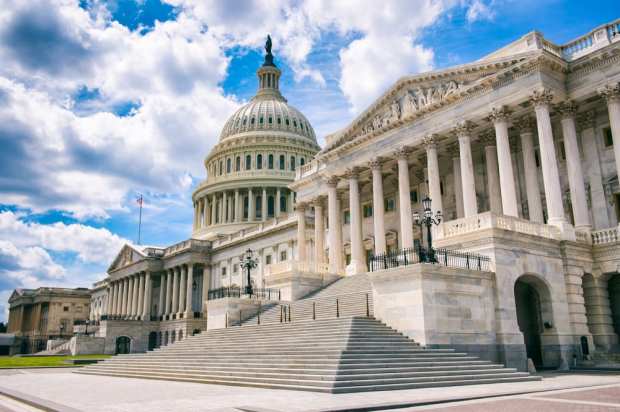Congress Presses Fed On Real-Time Payments Plan

The Federal Reserve’s buildup to faster payments innovation came to a head in August when it announced FedNow, its proposed real-time payments infrastructure under the draft Payments Modernization Act of 2019. Reception toward the initiative was not, however, universally positive.
The U.S. House Committee on Financial Services Task Force on Financial Technology held a hearing Thursday (Sept. 26) titled “The Future of Real-Time Payments” to discuss the development of FedNow and its implications for the U.S. payments ecosystem. Despite some previous pushback, the Fed, represented by Federal Reserve Bank of Kansas City President and Chief Executive Officer Esther L. George, was met with widespread support from her fellow witnesses.
Speaking before Congressman Stephen Lynch of Massachusetts, senior member of the House Committee on Financial Services, and the rest of the committee, witnesses from the Fed and other areas of the payments community offered their support to FedNow — but not without caveats.
One of the committee’s largest criticisms of the Fed’s proposed service is its limited funds transfer availability window, as well as its five-year timeline to roll out the FedNow service.
“That seems like a lifetime in this business,” said Congressman French Hill of Arkansas. But as lawmakers consider updates to the proposed Payments Modernization Act of 2019 to address these concerns, other witnesses similarly voiced their recommendations and warnings as the Federal Reserve moves forward.
Competition and Interoperability
Congress is encouraging the Federal Reserve to take advantage of the fact that the U.S. lags behind other markets in real-time payments adoption, and look to more advanced services in other markets for best practices. Unlike other countries, however, the proposal for FedNow means the U.S. would not operate a single, unified real-time payments service; rather, FedNow would operate in conjunction with other services in the private sector, including The Clearing House’s RTP network.
Witness Carol Benson, founding partner of Glenbrook Partners, spoke before the committee, noting that there are real benefits to the U.S. move to have multiple real-time payment services and give financial and payment service providers choice. The country is amid a “once-in-a-generation shift in how payments systems work,” she said, however, the Fed must ensure that FedNow is interoperable with other faster payment systems.
“This mirrors our ACH system, which has two operators,” she noted. “To achieve the goal of ubiquity in a multiple network model, these systems must connect … they must be interoperable.”
While the technological barrier to interoperability is not necessarily so high, what is most difficult about achieving this is establishing and managing industry-wide standardization, which Benson advised the Fed to keep a priority. While real-tine payments services may not be unified, she argued, the Fed should consider supporting a single, central utility to manage these standards and user identities.
Accessibility Beyond Big Banks
Small and community banks were among the early supporters of FedNow when it was first announced, and representing community banks at Thursday’s hearing was Bob Steen, chairman and chief executive officer of Bridge Community Bank, also there on behalf of the Independent Community Bankers of America.
Achieving a real-time payments system, and ensuring access to that system for financial institutions of all sizes, is “too important to be entrusted to a private monopoly,” Steen said. “Only the Federal Reserve can guarantee competition and choice. The U.S. does not need another closed-loop system in which some financial institutions can participate, and others are excluded.”
The committee also heard from Rodney Williams, co-founder and chief commercial officer at LISNR, who urged the Fed to broaden accessibility to the service for underbanked consumers. That means supporting access to the system for financial institutions of all sizes along with other licensed financial service providers, as well as prioritizing fraud mitigation and security to keep costs low. Real-time payments, said Williams, support un-banked and under-banked users by enabling faster access to wages, for example, so as the Fed moves forward with building the infrastructure, keeping access barriers as low as possible will be paramount.
Global Connections
Lowering barriers to entry is key to adoption and ubiquity in the U.S., but as TransferWise Chief Technology Officer Harsh Sinha told the committee, the Federal Reserve’s FedNow must also ensure that banks, FinTechs and other players are able to access the system from other markets around the globe. FedNow’s opportunity is not only in enabling real-time payments for domestic transactions, he said, but also in accelerating cross-border ones.
Currently, non-banks must collaborate with banks to gain access to U.S. payment systems, which “results in added costs and partner dependence,” he said. “In order to facilitate competition and ensure benefits of faster payment, the U.S. should prioritize accessibility and inclusion of non-banks in the faster payments system.” The country has an opportunity to learn from other markets like the U.K. (especially in areas like fraud mitigation), he said, and leapfrog its way into real-time payments to more effectively compete in the world.
Though members of the House Committee indeed pressed the Federal Reserve on its timeline and ability to open up operating windows, members of the payments ecosystem overall supported FedNow and its objectives. According to the Fed’s George, the Federal Reserve has the advantage of already having connections with more than 10,000 financial institutions, meaning FedNow’s path to ubiquity could be much easier than it would be for others.
But while members of the payments ecosystem support FedNow, its development must address a wide range of issues, from lowering costs to addressing the risk of fraud to enabling FinTech accessibility. If the Fed can balance those needs, there are significant benefits to be gained, said Congressman Lynch, for consumers, small businesses and service providers alike.
